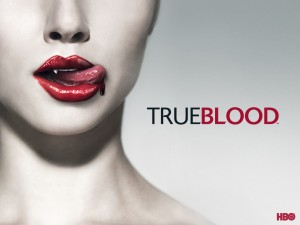Most corporations these days either worry about their online presence or pay someone else to do so. Television has followed suit, with many major networks adopting a social component in an attempt to increase engagement and stay relevant. But there’s a big difference between just doing it because a brand thinks they have to, and doing it well. To look at the details of making effective and engaging campaigns, here are examples of the extremes of the spectrum of very good and very bad social media components from major TV networks.
The Awesome: RuPaul’s Drag Race
The reality hit has a multifaceted social media approach, primarily using Facebook and Twitter. Logo has taken an approach across several of its shows in which writers are including suggested hashtags directly in the program to encourage live tweeting. This tactic is used in their live sex advice program That Sex Show to allow viewers to ask questions during the show. Drag Race does this particularly well: producers even play off of Rupaul’s often-shameless self-promotion with a wink and post-production twinkle in his eye. The hashtags are often as catty as the queens themselves (one poor queen’s outfits were lampooned with the tag #BedBathandBeyonce) and directly relevant to the content. The show even uses its neologisms and drag lingo as hashtags: #WERK , #sickening, and #Dragulator are fan favorites. Translating the show’s unique rhetoric to Twitter brings the show’s clever style and bold aesthetic into its online presence.Better still, many of the queens are also on Twitter and interact with their fans.
The Facebook component is also quite effective. As with Twitter, individual queens have their own accounts and can update with their own content and interact with fans. Yet among the best features of the Facebook campaign is the “RuDunnit?” game and ad series, a dual effort from Logo and Absolut Vodka. The game correlates with a series of vintage detective noir-style ads featuring the previous season’s top queens, each in her own representitive color, being “interrogated” by Michelle Visage over the theft of Season 3 winner Sharon Needles’ crown. The object of the game is to help solve the mystery, and of course, Tweet about it. This interactive advertising is fresh and interesting, and treats viewers as intelligent rather than appealing to the lowest common denominator.

This campaign shows that a little creativity can go a long way, and that sticking to what works for the show never hurts in either traditional ads or social media campaigns. Gamification, when executed well, can be an excellent strategy for engagement. This strategy has also worked quite well for AMC, with The Walking Dead social game.
The Atrocious: True Blood
HBO really dropped the ball on the social media component of the incredibly popular True Blood series. The biggest fail on this front is the ‘baby vampire’ character’s blog. While this is a format that a few programs have experimented with, the only ones that seem to get a lot of interaction are those geared towards younger viewers (Canadian teen drama Degrassi: The Next Generation jumps to mind). In the case of True Blood, it’s actually the teenage vampire who keeps a blog, and writes in perhaps the most obnoxious alphabet-soup of abbreviations possible. The tone is juvenile, the content is vapid, and worst of all, there’s tons of it.
While the character blogging tactic has the potential to add extra narrative dimensions or subplots to a program, the content of the blogs does not appear to be related–even tangentially–to the plot. On top of that, the blogging just isn’t effective. Entries are long streams of barely coherent, linkless text, and the blogger never responds to comments at all. These factors combined mean, for the audience, that there’s nothing to gain from the blog that one couldn’t get better, and more efficiently, from the TV show.

The rest of the campaign follows the suit of abundant, low-quality material: there are lots of wallpapers and screensavers, but not much behind-the-scenes or effective interactive material. Again, there’s plenty of the aesthetic fluff that has worked for the series, but nothing to gain from engaging. The social media component of their advertising could have been successful if its organizers had kept in mind what keeps the show’s viewers coming back: content.
The Bottom Line:
The success and quality of a social media campaign depends largely on creativity, good content, and (as always) attention to audience. Details matter: one generic campaign for an entire network with the information for various programs just copy-pasted throughout conveys laziness and carelessness. True Blood‘s lackluster approach doesn’t give incentive for most viewers to connect with the online community and won’t even command the attention of die-hard fans in the long run. Interactivity is certainly good, but achieving the kind of engagement you want requires real effort knowing your viewers’ interests and their limits.
